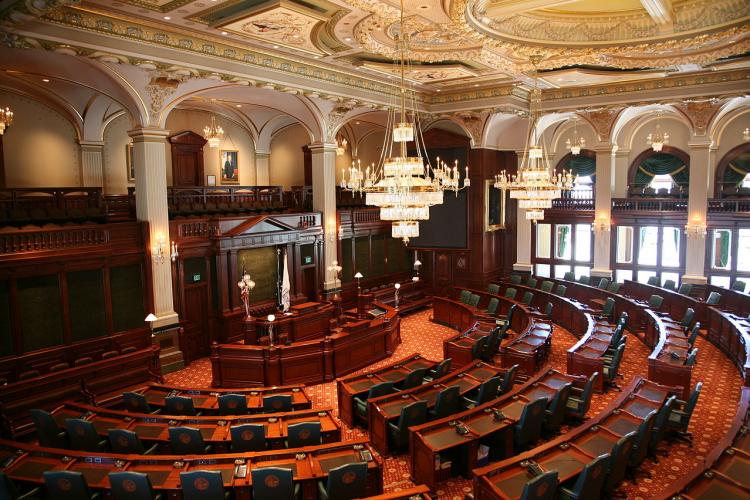
After more than two years of legislative proposals and negotiations, on Wednesday, December 7, Illinois Governor Bruce Rauner signed into law the Future Energy Jobs Bill (SB 2814). The bill, which contains support for renewable energy, nuclear energy and energy efficiency, was passed by the Illinois legislature on December 1, the last day of veto session, with bipartisan support and will take effect June 1, 2017.
As a non-lobbying organization, MEEA did not take a position on the legislation, but did provide Governor Rauner’s office with information on the performance of energy efficiency in Illinois since the establishment of the portfolio standard and the impact in other states of self-direct programs and opt-out policies. As this legislation moves towards implementation, MEEA staff will continue to educate and reach out to policymakers.
Don’t have time to read all 500 pages of the bill? Here’s an overview of the energy efficiency provisions which were included and removed from the final version.
Energy Efficiency Targets
Beginning in 2018, ComEd will achieve 7.8% cumulative persisting annual electric savings. This number ramps up every year through 2030, at the end of which ComEd will achieve 21.5% cumulative persisting annual savings.
In 2018, Ameren Illinois will achieve 7.4% cumulative persisting annual electric savings. Ameren Illinois’ target ramps up to 16% cumulative persisting annual savings by the end of 2030.
The Illinois Commerce Commission does have discretion to adjust these goals.
Planning Cycles
Current programs will be extended six months through the end of 2017 so that program implementation efforts will align with the calendar year going forward.
Beginning January 1, 2018, utilities will be required to file and implement four-year demand-side management plans with the Illinois Commerce Commission. This is a change from the current 3-year cycle.
Rate Impact Cap
One of the primary concerns that Governor Rauner and others had with the legislation was its cost to consumers, specifically rate increases. While energy efficiency may arguably be the most accessible energy option for giving customers control over – and the ability to lower – their energy bills, rate impact caps were placed on the energy efficiency portion of the legislation. Moreover, the entire legislation has a rate impact cap.
The existing rate impact cap is at 2%. The new legislation raises the cap according to the following schedule:
- 3.5% for the each of the 4 years beginning January 1, 2018
- 3.75% for each of the 4 years beginning January 1, 2022
- 4% for each of the 5 years beginning January 1, 2026
If the actual or projected average monthly increase for residential customers for the cost of the entire bill is projected to or actually exceeds $.25 in ComEd’s territory and $.35 in Ameren’s territory, then the utility must make adjustments to the programs enabled by this legislation. If the cap exceeds or is projected to exceed this limit for two years in a row, the utility may file to terminate some of the programs. Utilities can still recover costs on investments made prior to program termination. Programs that can be altered include the energy efficiency and the zero emission credit programs.
For Ameren Illinois’ and ComEd’s commercial and industrial (C&I) customers, if the actual or projected average annual increase for C&I retail customers exceeds 1.3% of $.089 per kilowatt-hour, the utility must make changes to or terminate programs. This cap covers the combined impact of the renewable energy, energy efficiency and zero emission credit programs detailed in the legislation.
Performance Incentives
This legislation includes both performance incentives and penalties to encourage electric utilities to meet their energy savings goals. Incentives and penalties are applied to the utility’s return on equity. Penalties and incentives are tailored for ComEd and Ameren Illinois, and for both utilities, the threshold for earning a penalty or incentive varies over time.
Large Energy User Exemptions
Customers that have a peak demand of or over 10 MW for 30 minutes in ComEd’s territory and 15 minutes in Ameren’s territory are exempt from participating in utility demand-side management programs beginning on June 1, 2017. MEEA does not expect that customers will be allowed to aggregate their loads.
Public Sector and Low-Income Energy Efficiency
Beginning in 2018, electric and natural gas utilities will administer public sector and low-income energy efficiency offerings that are currently administered by the Illinois Department of Commerce and Economic Opportunity.
Once the utilities take over these programs, Ameren Illinois and ComEd must use 7% and 10%, respectively, of their annual funds for public sector energy efficiency programs.
ComEd is required to allocate at least $25 million annually to low-income energy efficiency programs administered by a third party. Ameren Illinois must dedicate a minimum of $8.35 million for third party administered programs serving low-income customers. Taken together, the allocation of funds for low-income programs represents a doubling of current levels of investment. Electric utilities are also required to convene low-income advisory committees to inform the delivery and design of these programs.
Odds and Ends
The Illinois Commerce Commission will be overseeing an energy efficiency installer certification. This certification will be required of all those working with utility rebate and incentive programs.
Electric utilities can pay for natural gas efficiency measures and count natural gas savings to meet up to 10% of their electric savings targets annually.
Electric utilities may count their investments in voltage optimization towards their energy savings targets, but the spending on voltage optimization does not count towards the rate impact cap calculation.
Up to 3% of an electric utility’s annual budget may be used for program evaluation.
What Got Nixed
A version of the compromise legislation introduced before Thanksgiving included provisions to implement demand charges in both ComEd and Ameren Illinois’ territory. This bill also included subsidies for in-state coal plants and five pilot microgrid projects within ComEd’s territory. Each of these elements was eliminated in the final version.